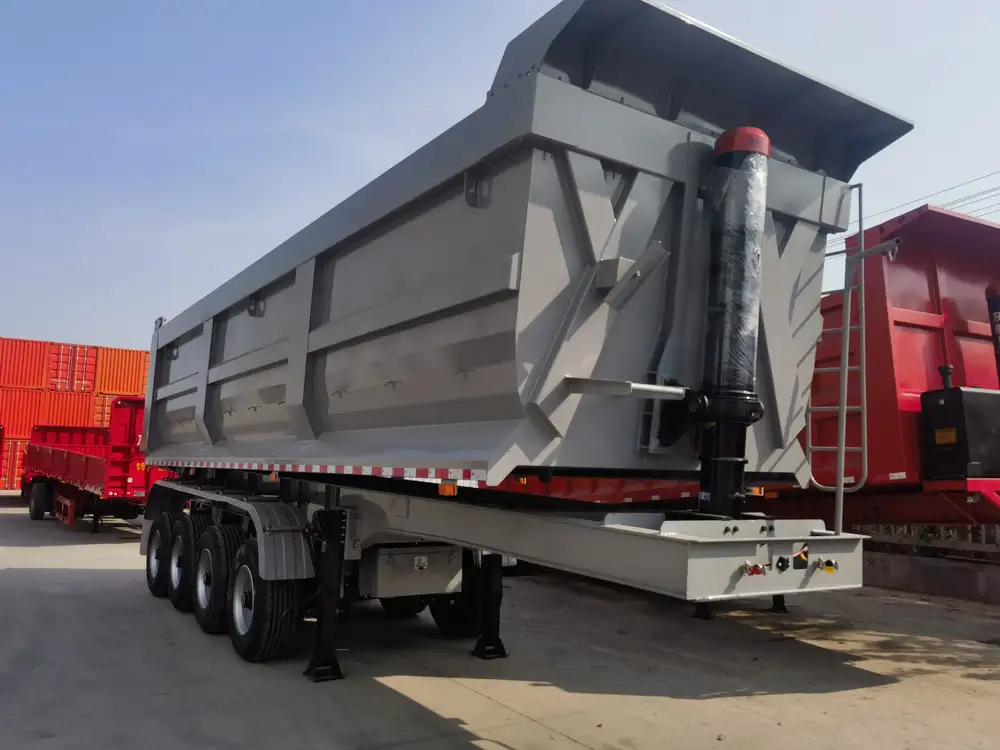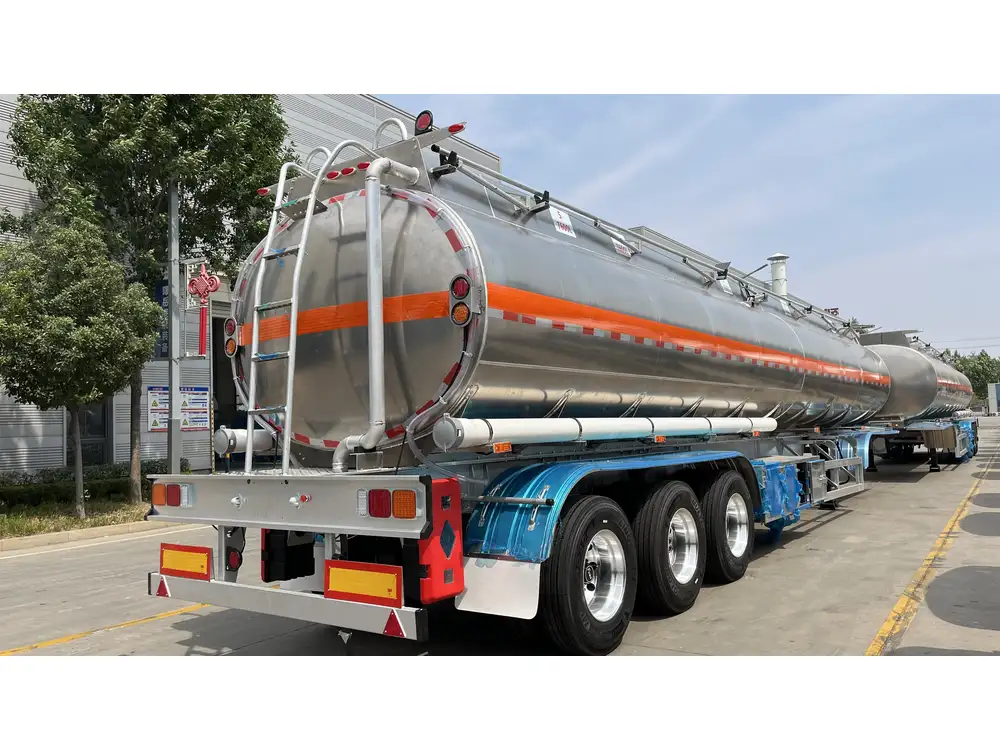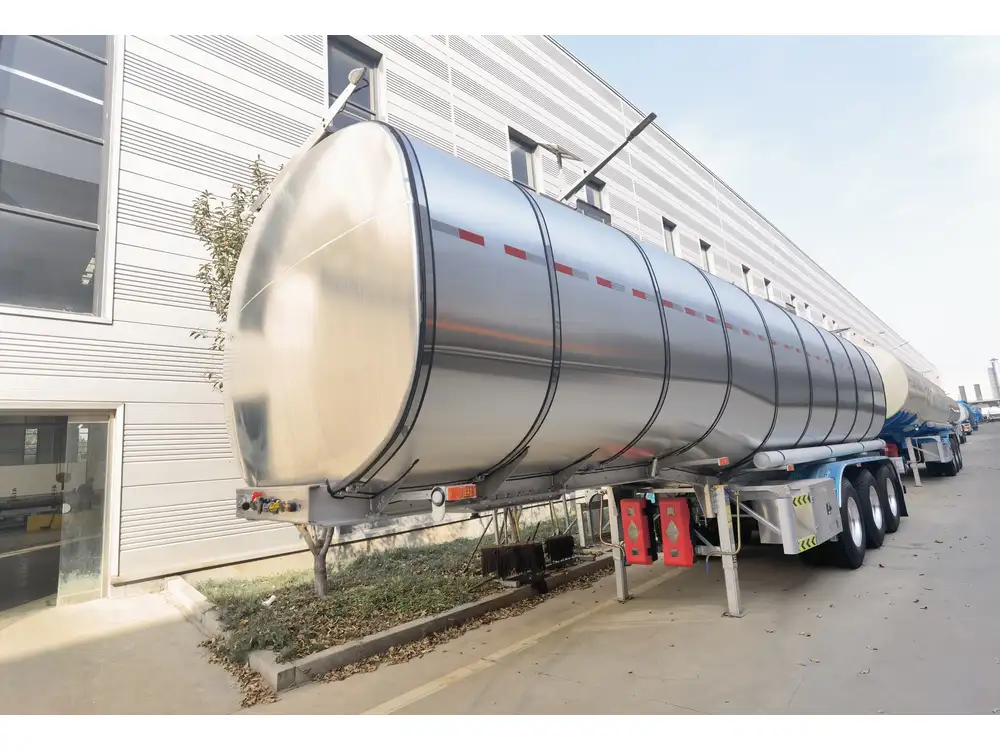When it comes to the transportation industry, understanding vehicle specifications is crucial for compliance, safety, and efficiency. One of the most pertinent specifications is the weight of a 53 ft semi-trailer. This article delves deeply into various aspects surrounding this critical topic, providing manufacturers, logistics companies, and transport professionals with the necessary knowledge to make informed decisions.
Table of Contents
- Overview of 53 ft Semi-Trailers
- Weight Specifications: Understanding the Basics
- Factors Influencing the Weight of a 53 ft Semi-Trailer
- 3.1 Construction Material
- 3.2 Trailer Configuration
- 3.3 Additional Equipment and Features
- Comparison of Different Trailer Types
- Legal Weight Limits and Regulations
- Implications of Weight for Transportation Efficiency
- Tips for Managing and Reducing Weight
- Conclusion
1. Overview of 53 ft Semi-Trailers
The 53 ft semi-trailer stands as the standard length for many trucking operations in the United States. Designed primarily for freight transport, these trailers play a significant role in the supply chain, enabling the movement of goods across vast distances. Understanding their weight is pivotal for effective logistics management, loading, and overall operational efficiency.

2. Weight Specifications: Understanding the Basics
When we discuss the weight of a 53 ft semi-trailer, it’s important to differentiate between several key terms:
- Empty Weight (Tare Weight): The weight of the trailer without any cargo.
- Loaded Weight (Gross Vehicle Weight): The total weight when the trailer is fully loaded with cargo.
- Payload Capacity: The maximum weight of cargo that the trailer can safely carry.
Typically, a 53 ft semi-trailer has an empty weight ranging from 10,000 to 15,000 pounds (4,536 to 6,804 kg), depending on its design and materials.
Empty vs. Loaded Weights
| Type | Weight Range |
|---|---|
| Empty Weight | 10,000 – 15,000 lbs |
| Loaded Weight | 68,000 – 80,000 lbs |
| Payload Capacity | 50,000 – 70,000 lbs |
3. Factors Influencing the Weight of a 53 ft Semi-Trailer
Understanding the various factors that influence a trailer’s weight is essential for manufacturers and operators alike.

3.1 Construction Material
The material used in the construction of semi-trailers plays a significant role in determining their overall weight. Common materials include:
- Aluminum: Lightweight and resistant to corrosion, imposing a lower overall weight, ideal for maximizing payload capacity.
- Steel: Heavier but offers greater durability and strength, often used in heavy-duty applications.
| Material | Advantages | Disadvantages |
|---|---|---|
| Aluminum | Lightweight, corrosion-resistant | Higher cost, less structural strength |
| Steel | Greater durability, cost-effective | Heavier weight, susceptible to rust |
3.2 Trailer Configuration
Different configurations, such as single or tandem axles, affect weight distribution and overall weight. Tandem axle trailers, for example, typically have a higher payload capacity, allowing for better weight distribution across the vehicle.
3.3 Additional Equipment and Features
Features like refrigeration units, side skirts, or aerodynamic enhancements contribute to the overall weight. While they may provide efficiency gains or specialized capabilities, they also add to the tare weight and subsequently reduce payload capacity.

4. Comparison of Different Trailer Types
Understanding the various types of semi-trailers can illuminate why weight considerations vary significantly. Below is a comparative analysis.
| Trailer Type | Average Empty Weight | Typical Payload Capacity | Use Case |
|---|---|---|---|
| Flatbed | 8,000 – 12,000 lbs | 48,000 – 58,000 lbs | Transporting oversized or heavy items |
| Refrigerated | 12,000 – 15,000 lbs | 40,000 – 50,000 lbs | Perishable goods transport |
| Enclosed | 12,000 – 16,000 lbs | 44,000 – 52,000 lbs | General freight, weather protection |
5. Legal Weight Limits and Regulations
Navigating the legal landscape of weight limits is vital for avoiding hefty fines and ensuring safety on the road.
Federal Regulations
Under the Federal Motor Carrier Safety Administration (FMCSA), the maximum weight limit for any single vehicle in the U.S. is 80,000 pounds, which includes the combined weight of the truck, trailer, and cargo. Importantly, specific states may have additional regulations that affect trailer weight, further complicating compliance.

Axle Weight Limits
Understanding axle weight limits is also crucial:
- Single Axle: Maximum of 20,000 pounds.
- Tandem Axle: Maximum of 34,000 pounds.
6. Implications of Weight for Transportation Efficiency
The weight of a semi-trailer directly impacts fuel efficiency, logistics, and operational costs.
Fuel Efficiency
Heavier loads often lead to increased fuel consumption. By strategically managing weight, operators can optimize fuel economy, thus lowering transportation costs.

Load Distribution and Stability
Proper weight distribution influences vehicle stability. Uneven loads can lead to tipping risks, particularly on turns or during adverse weather conditions.
7. Tips for Managing and Reducing Weight
To enhance operational efficiency, consider the following strategies:
7.1 Selecting Lightweight Materials
Opt for lightweight construction materials that maintain strength without excessive weight. Advanced composites or aluminum alloys can provide a balance between durability and weight.

7.2 Optimize Cargo Loading
Implementing proper loading techniques can significantly impact weight distribution and efficiency. Consider:
- Utilizing a weight scale to determine weight distribution.
- Loading heavier items first to maintain a lower center of gravity.
7.3 Regular Maintenance Checks
Regularly inspect your trailer for any unnecessary equipment that could be removed without compromising functionality. This can include outdated refrigeration units or surplus tie-downs.
8. Conclusion
Understanding the weight of a 53 ft semi-trailer is not merely a numeric concern; it is an integral part of strategic decision-making in the transport industry. By grasping the nuances of trailer configurations, material choices, and regulatory frameworks, businesses can optimize their operations, ensure compliance, and enhance fuel efficiency. Ultimately, informed decisions today pave the way for a more streamlined, cost-effective, and sustainable future in logistics and transportation.



